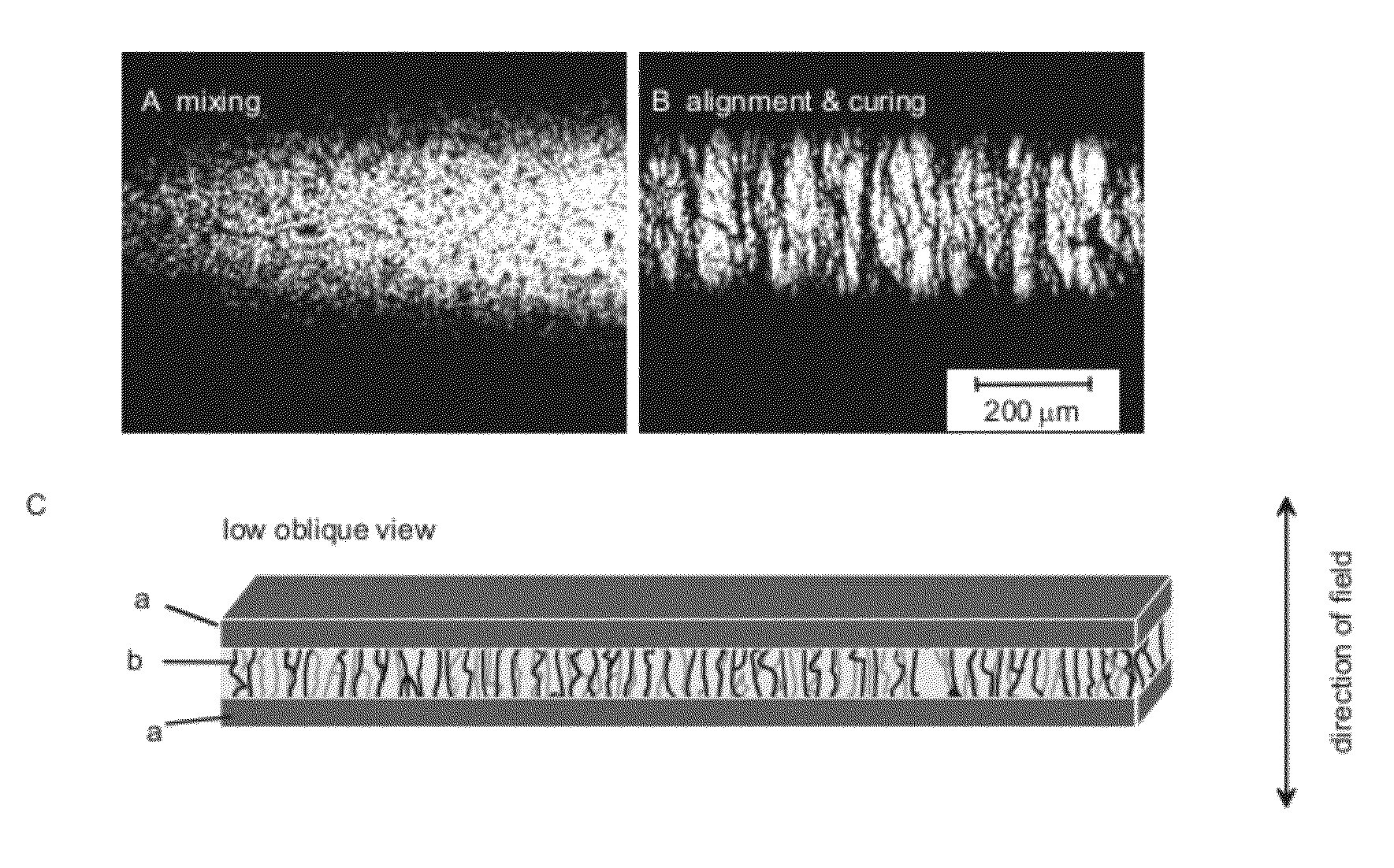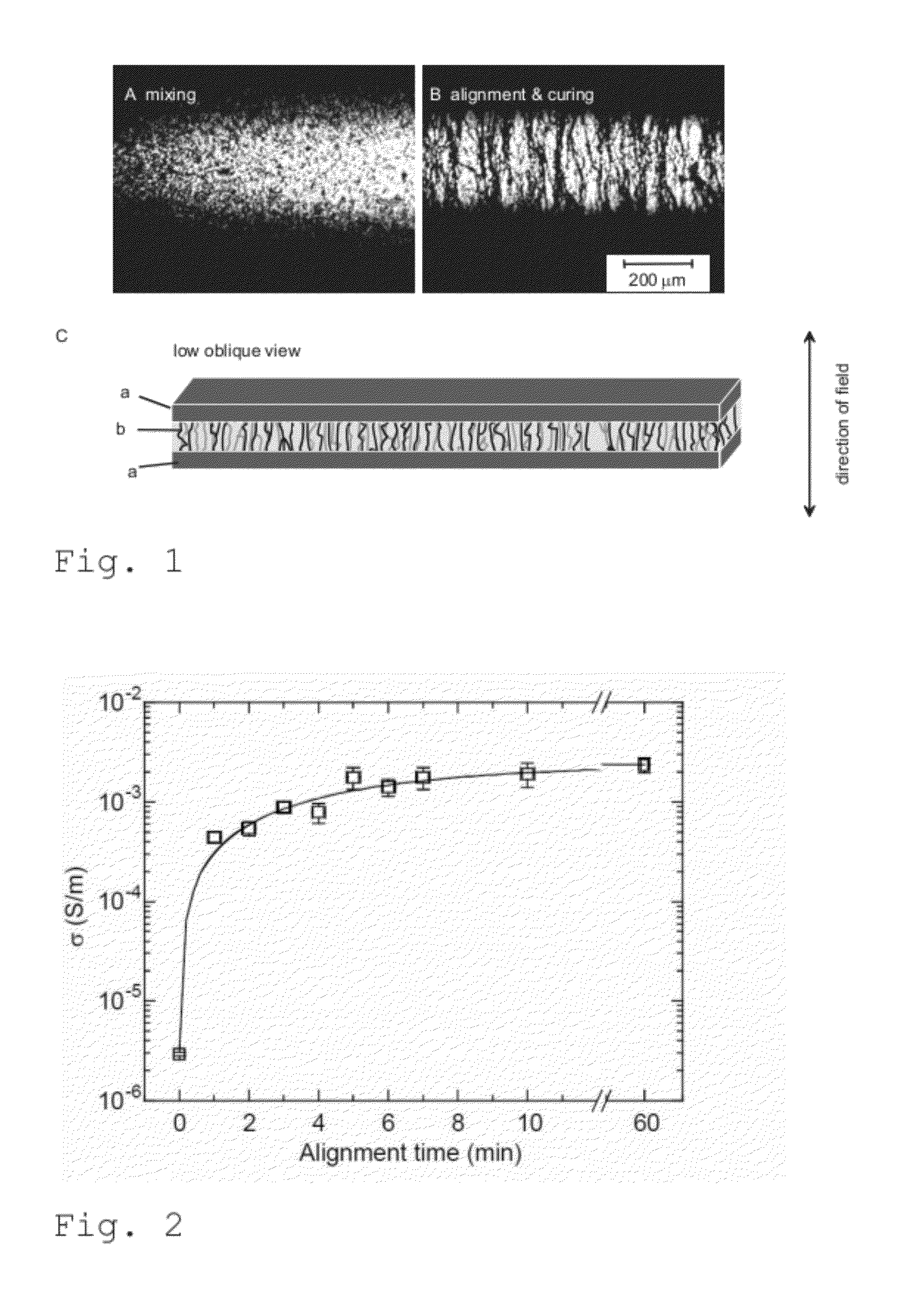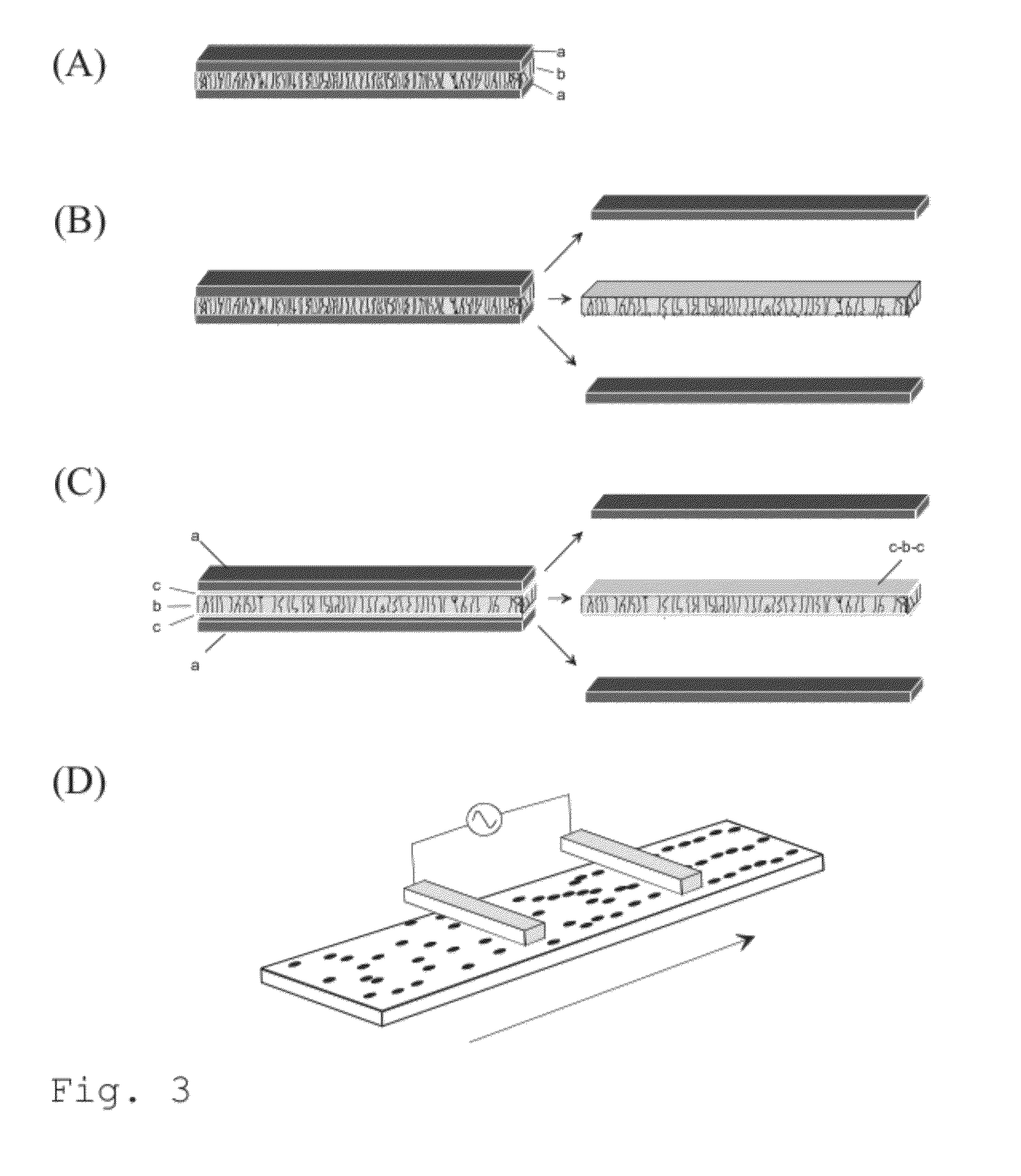Anisotropic conductive polymer material
a polymer material and anisotropic technology, applied in the direction of oxide conductors, conductors, non-metal conductors, etc., can solve the problems of difficult dispersion of nanotubes, difficult industrial production of carbon nanotubes, and limited life of mixed systems
- Summary
- Abstract
- Description
- Claims
- Application Information
AI Technical Summary
Benefits of technology
Problems solved by technology
Method used
Image
Examples
example 1
[0180]This example concerns the preparation of a mixture of conductive particles and polymer matrix that in this example is an thermally cured polymer adhesive; as well as determination of conductivity as a function of particle load; and how the step-like increase in conductivity with increasing particle load can be explained by formation of conductive paths between particles when the contacts are formed with increased particle fraction.
[0181]This example concerns moreover the preparation of the same mixture when the particle load is low, for example 10 times less than the observed percolation threshold, the limit where the isotropic non-aligned mixture is not conductive; as well as the alignment of this mixture using electric field so that the aligned particles form conductive paths resulting in a conductive material, whose conductivity is directional. The example, moreover, shows change of the viscosity of so obtained material, by curing, so that the alignment and directional cond...
example 2
[0193]This example concerns versatile choice of alignment conditions and illustrates how the present invention can be employed not only with electrodes connected to the orientation material but also with electrodes electrically isolated from the material.
[0194]The procedure was otherwise similar to that in example 1, but instead of having material directly connected to the alignment electrodes, the electrodes were electrically disconnected from the material by an insulating layer, for example by 0.127 mm Kapton® foils. Alignment occurred exactly as in Example 1.
[0195]This procedure allows removal of electrodes after alignment and thus freestanding aligned film even in the case where the matrix is adhesive. The alignment also occurs if the electrodes do not touch the material and so the alignment can be performed from the distance. When the material and electrodes are moved, continuous or stepwise, with respect to each others during the alignment, this allows continuous alignment pro...
example 3
[0196]This example concerns the applicability of the alignment method, the use of alignment for particular application of UV-curing. This emphasises the benefit of low particle fraction which makes the material more transparent for UV light for curing.
[0197]The procedure was otherwise similar to that in example 1 or 2 but the thermally cured polymer matrix was replaced by UV-curable Dymax Ultra Light-Weld® 3094 adhesive and the curing step was done by the UV-light with the wavelength 300-500 nm.
[0198]FIG. 4 illustrates the alignment of 0.2 vol-% CNC dispersion in out-of-plane geometry. The mixture was formed following the guideline of example 1 (FIG. 4a) but spread on the alignment electrode using RK Print Paint Applicator that uses a moving bird applicator to level the adhesive layer to the predetermined thickness (the idea is schematically illustrated in FIG. 4b). This admixture was aligned following the method outlined in example 2 but the upper electrode was not in contact with ...
PUM
| Property | Measurement | Unit |
|---|---|---|
| electric field | aaaaa | aaaaa |
| electric field | aaaaa | aaaaa |
| aspect ratio | aaaaa | aaaaa |
Abstract
Description
Claims
Application Information
 Login to View More
Login to View More - R&D
- Intellectual Property
- Life Sciences
- Materials
- Tech Scout
- Unparalleled Data Quality
- Higher Quality Content
- 60% Fewer Hallucinations
Browse by: Latest US Patents, China's latest patents, Technical Efficacy Thesaurus, Application Domain, Technology Topic, Popular Technical Reports.
© 2025 PatSnap. All rights reserved.Legal|Privacy policy|Modern Slavery Act Transparency Statement|Sitemap|About US| Contact US: help@patsnap.com



